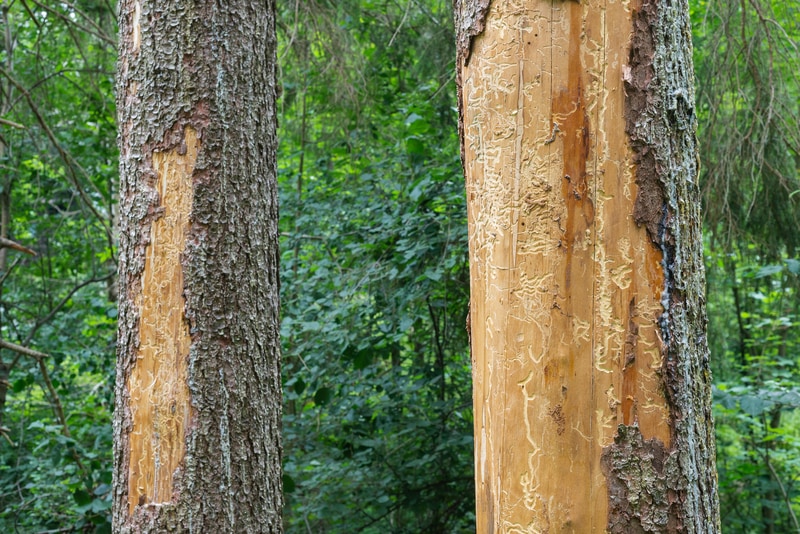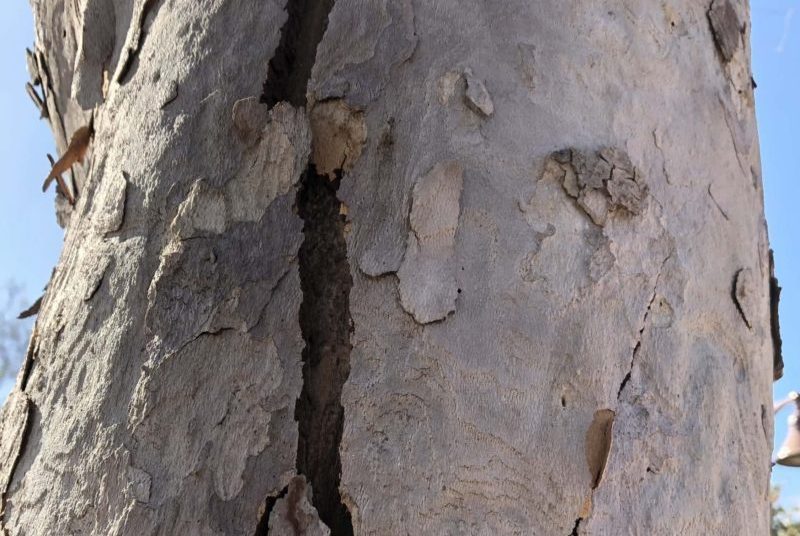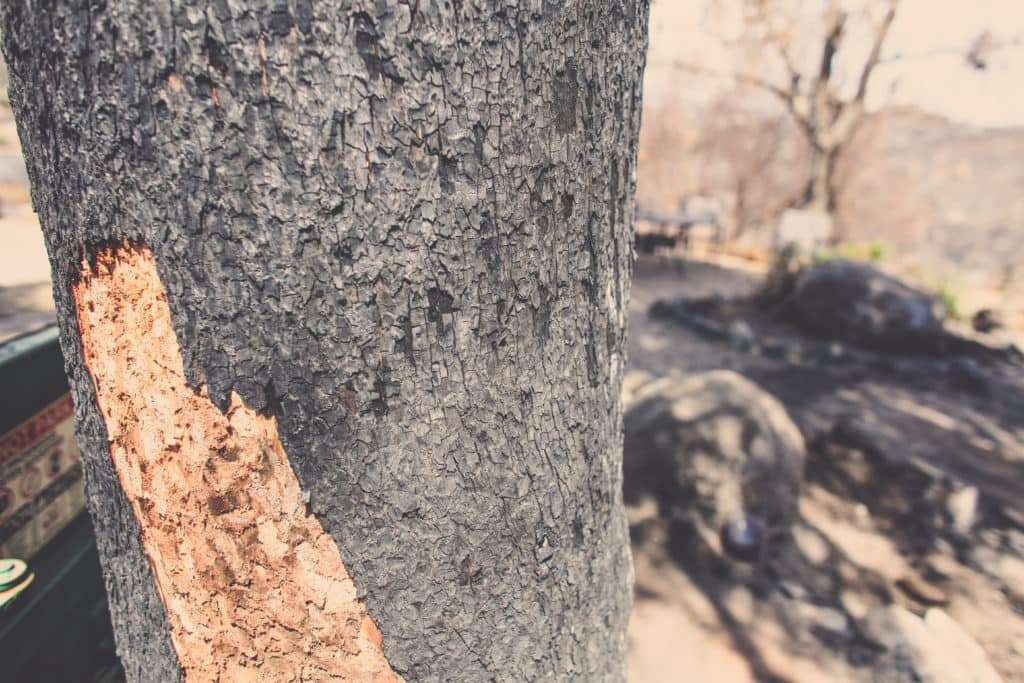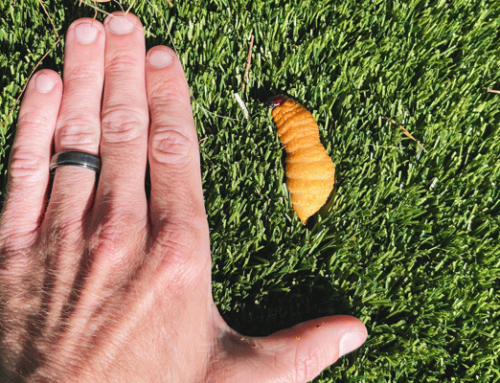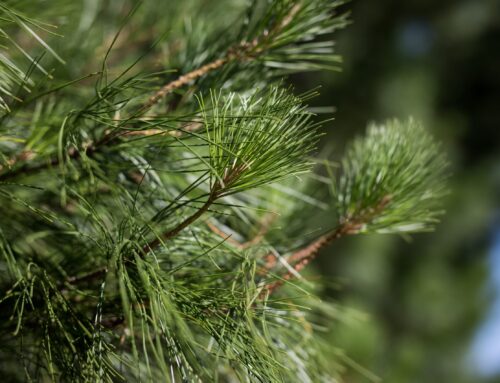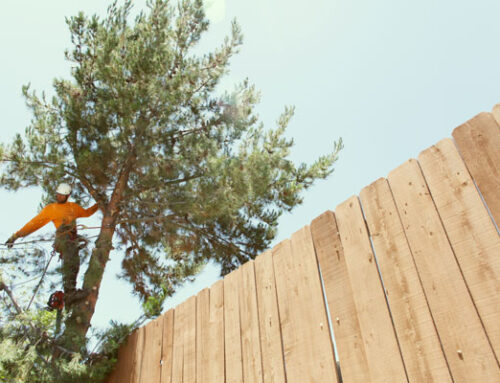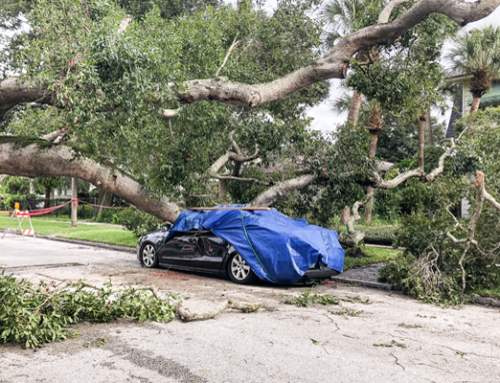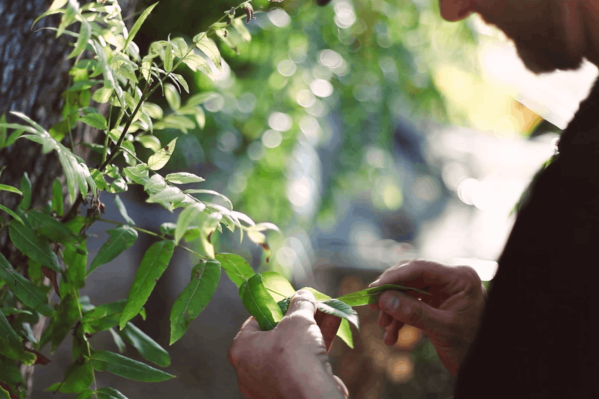
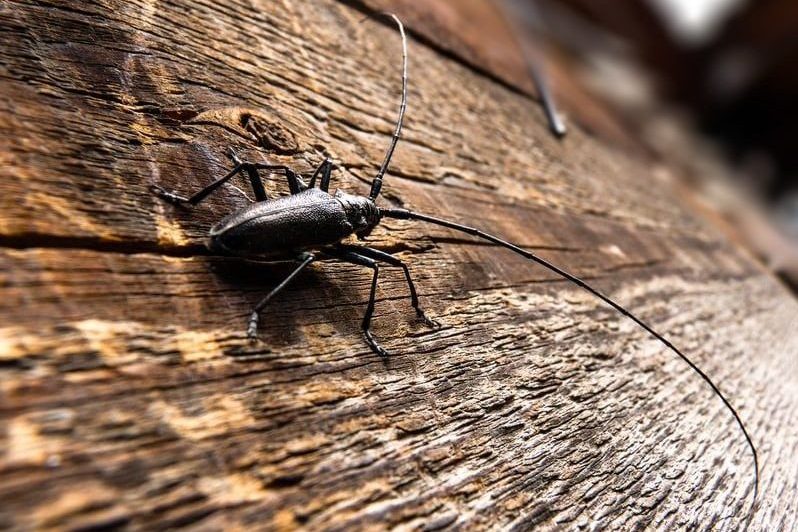
Trees can be a prized addition to any property, especially when they are large, mature, and well-maintained. Most people plant young, smaller trees on their property to save money and simply wait for the tree to grow to an ideal size, since transplanting a mature tree has a hefty price tag! Depending on the size of the tree, it can cost several $100,000. Yikes!
So when your cherished investment that you’ve been watching grow for the past 10 or 20 years starts to show signs of an infection or pest infestation, what should you do? IS there anything you can do to save your tree from further decline? The answer can be “yes” or “no.” The key is early detection. If an invading virus, bacteria, fungus, or pest has penetrated too deeply into the tree’s system, the extensive damage has been done and the only recommendation would be a tree removal. However, if the invaders are caught “red-handed” early on, then controlling, even eradicating them, is much more simple. Thankfully, there are several evident signs that you can look out for.
INFECTION + INFESTATION SIGNS
UNSEASONAL YELLOW OR BROWN FOLIAGE
When a tree is struggling with sickness or infestation, one of first signs that a property owner will notice is the change in the tree’s leaves. Nutrients are being robbed or nutrient absorption is hindered by the damage that is inflicted by the invaders. As a result, the tree’s foliage starts to die back and lose its color. This can be a tricky indicator source for an untrained eye, however, during the fall and winter months, since that is the time of the year when the leaves from deciduous trees naturally die off. Occasionally, we’ve received an inquiry from someone wanting their “dying” tree removed for safety concerns—when really it was winter, and the tree was simply doing what trees do in the winter. When deciduous trees start to go into hibernation, the discoloration in their foliage tends to spread throughout the entire canopy fairly quickly compared to that of an infested or infected tree. You should also note that evergreen trees shouldn’t have patches of browning foliage, as they are meant to stay green all year round. Therefore, using this indicator for evergreens, like pine trees, is more clear-cut than it would be for deciduous trees.

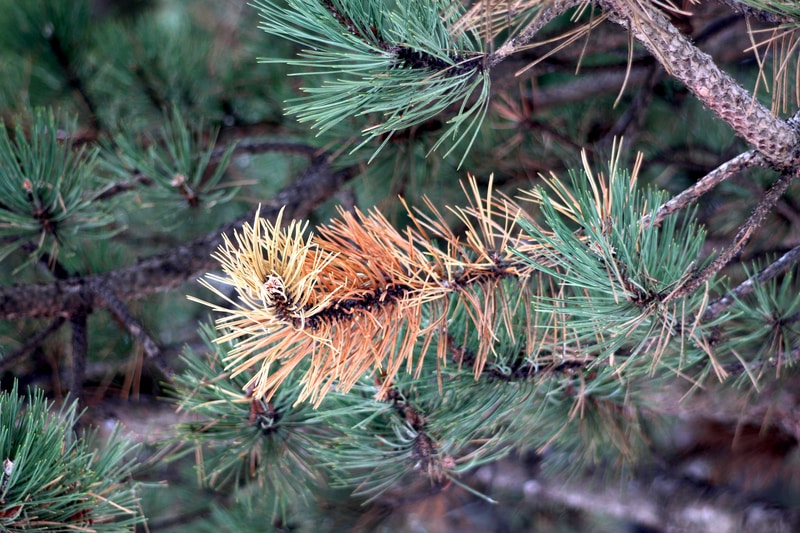
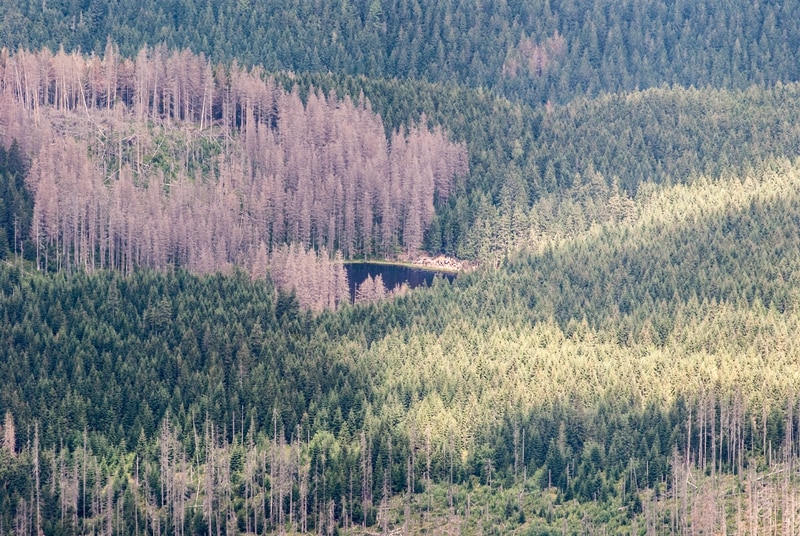
LEAKING TREE
Leakage from a tree is indicative of an injury, which could be a non-issue or a big issue. Anytime a tree loses a limb from a trimming or natural causes, it sustains an injury, which can cause it to bleed or leak sap. Typically, a tree will seal up its injuries—the same way our bodies heal up cuts. However, unlike the human body, trees do not heal—they seal. They do not repair the injury from the inside out, but instead compartmentalize the wound and form new callus tissue around and over the injury.
WETWOOD, or slime flux is a very common bacterial infection found in many trees. Oftentimes it can be found at the crotch of tree due to cracks in the wood or at a pruning site. But sometimes it be found just about anywhere on a tree. The bacteria makes its way into the heartwood and sapwood, typically through root injury. It, then, does its little thing, causing gas buildup. This increase in pressure pushes the sap out through any little crack or weak spot on the tree’s outer layers. Unfortunately, there are no known treatments for slime flux. But thankfully, it’s an infection that isn’t a big deal. Occasionally, it can have detrimental effects on an unhealthy tree—but for the majority of affected trees, it’s harmless.
BORING BEETLES are to blame for many sap leaks found in trees, especially in San Diego’s oaks and pines. Any tree that already has leaking sap is an easy target for these invaders, because it signals an easy entrance in, and it could also indicate that the tree has a weaker defense system. If beetles don’t enter through an already-existing wound, then they’ll eat their way through the bark to make a new home for their upcoming brood of cute little larva babies. Once the larvae are fully mature, they bore their way all the way out of the tree, leaving behind exit wounds or D-shaped holes. If the infestation is new, then the exist wounds may leak sap, which is still a good sign that the tree is still vivacious enough to try to defend itself. However, if a tree contains a number of dry holes that aren’t leaking, then it’s an unfortunate sign that the tree has been under attack for quite some time. The key to avoiding a beetle infestation from killing your tree is early detection. Spot a few holes, your tree may be okay. Spot more than a dozen, then contact LC Tree Service immediately for a consultation and possible treatment plan.
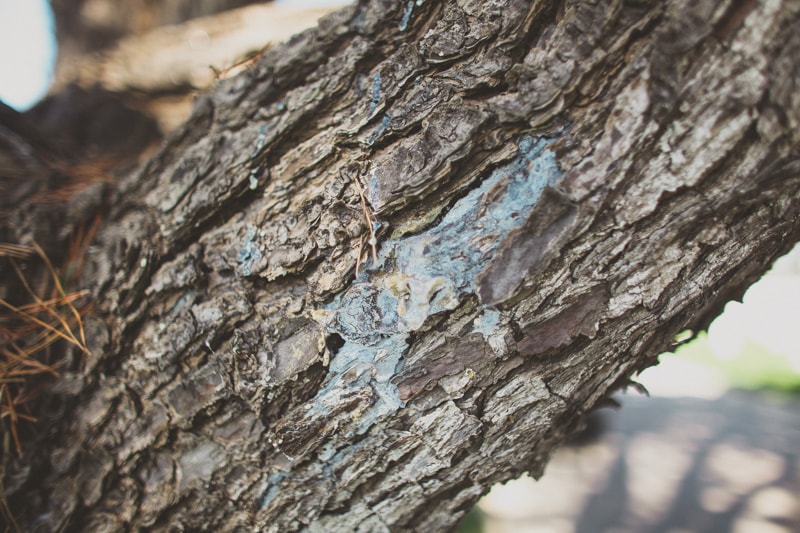
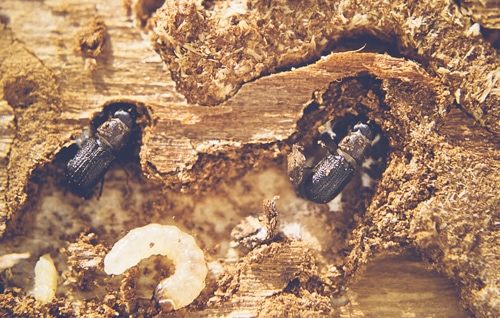
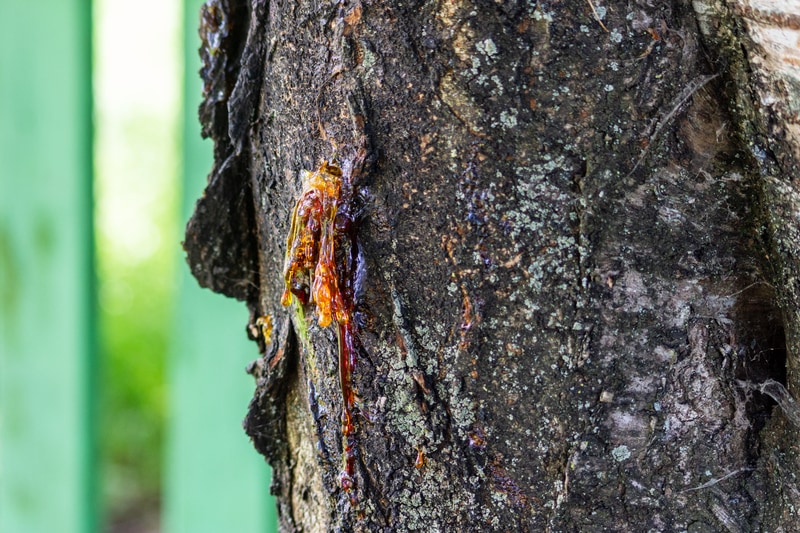
CONKS OR MUSHROOMS
Mushrooms on a plate of spaghetti—a great addition! Mushrooms at the base of a tree trunk—BAD!
Mushrooms, or conks, are the fruiting body of a fungus. While not all mushrooms are equally damaging to a tree, most are an external sign that something detrimental has already been going on internally or underground within the tree’s roots. Some fungi go directly for the roots, while others enter the tree through exterior wounds on the trunk or limbs that are caused by any number of sources, including tree trimming, cracks in the bark, blades from a lawnmower, or any other means of damage. Then the real impairment begins as the fungus releases an enzyme that breaks down the tree’s tissue to begin eating away at a seemingly unending source of food.
If the tree’s roots and/or base have been under fungal attack, then it makes the tree a likely candidate for breaking and falling—or what is known as tree failure. While fungicide treatments can slow down the spread of the fungus, in most cases where mushrooms are present (especially at the base), the tree is beyond repair due to the extensive internal damage that has already been done. If the foundation of the tree has been compromised, then unfortunately, the safest measure would be a tree removal.
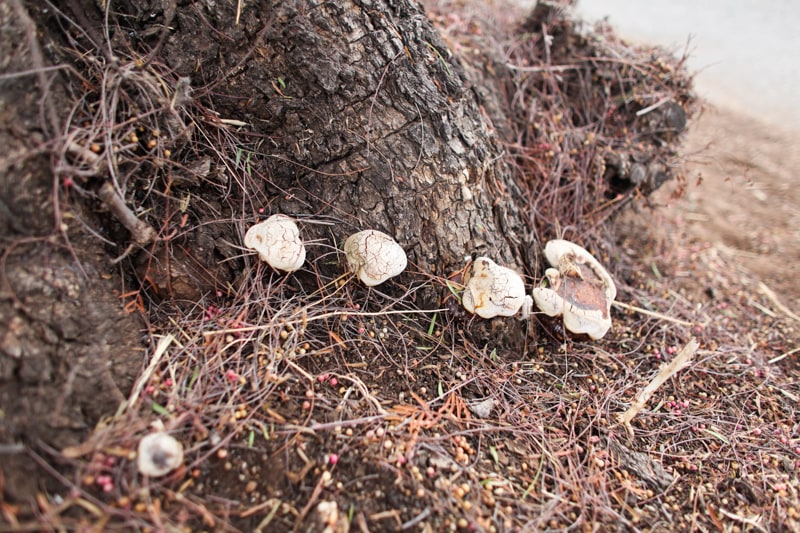
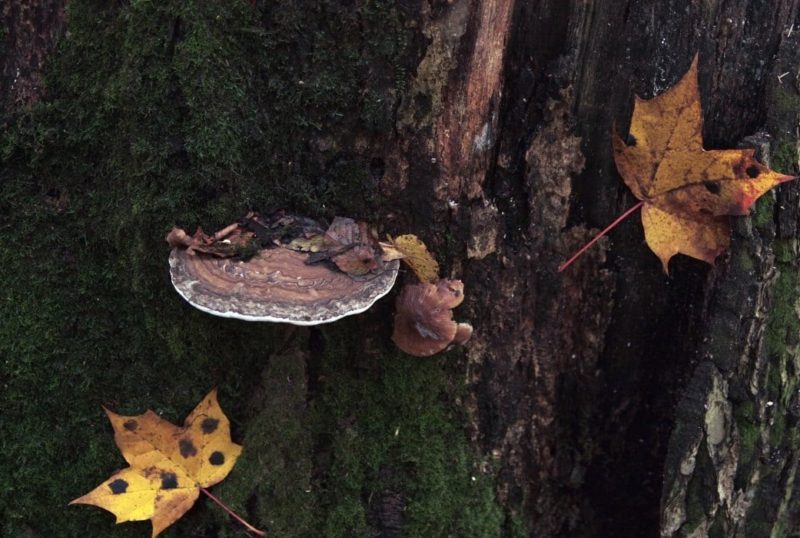
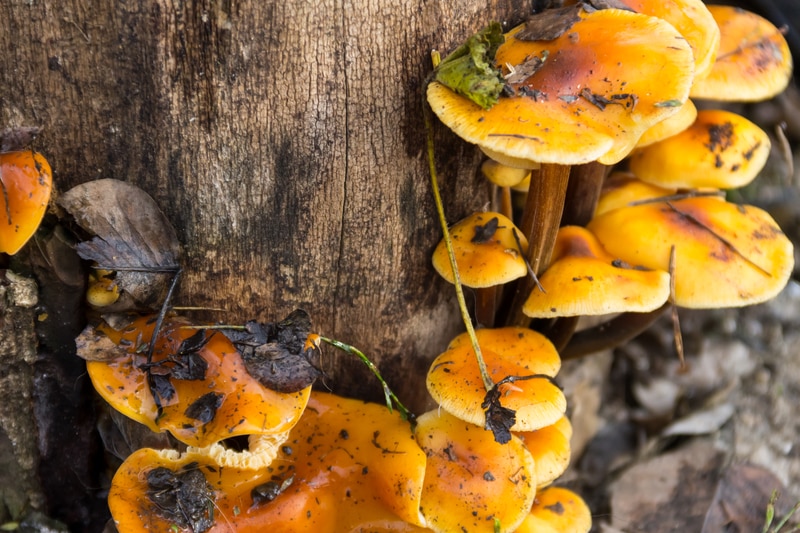
POWDERY MILDEW
If you notice a white powdery substance on your tree’s leaves, have no fear—it is a common fungal disease that is easy to remedy. The powder is the result of airborne fungal spores that spread with the wind to look for new trees to inflict. When a tree has been infected, white to grey fuzzy blotches appear not only on the leaves, but also on the stems and buds. This is a tree infection that is unavoidable in many parts of the world and can strike almost any tree. However, the most preferred tree species include oaks, dogwood, magnolia, maple, azaleas, lilacs, and crape myrtle.
The fungus thrives in humidity and in temperatures above 60 degrees—although it can still be found in arid climates as well. In the winter, it lies dormant, and it is awakened by the warmer spring temperatures. Growing season! New spores are produced in the dampness of the night, which are then carried off during the day by the wind. This process continues as long as the humidity levels and temperatures are high enough.
While the fungi that cause powdery mildew are hard to avoid, there are steps that you can take to prevent your trees from being infected.
- Plant trees in areas with plenty of sunshine to aide in keeping its foliage dry.
- Avoid wetting the foliage in the late afternoon.
- Keep trees well-trimmed to help increase air circulation and light penetration.
- Plant trees with plenty of space in between trees to help avoid cross-infection.
- If planting a new tree, consider a less-susceptible tree species.
Fortunately, this fungus is one that can be controlled with proper fungicide. Please contact us, if you notice leaf powder on your trees to avoid spread and leaf distortion.
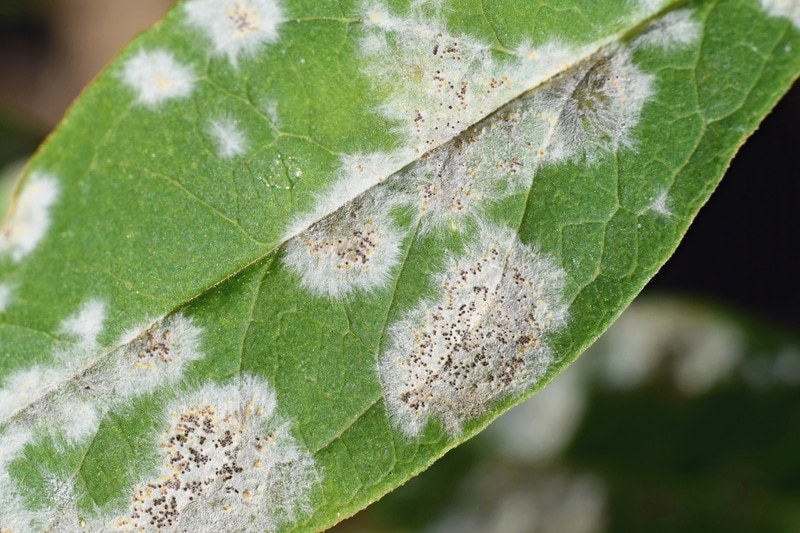
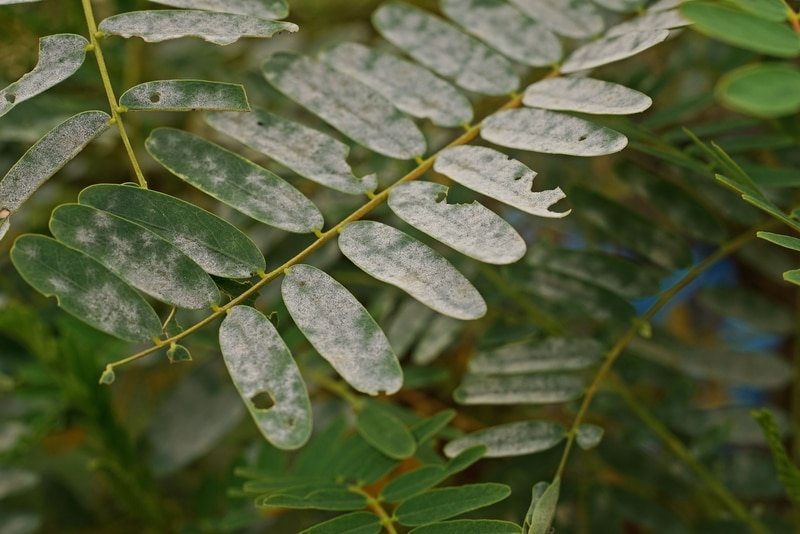

LOOSE BARK
All trees shed off their bark and crack to some degree. It’s simply their natural process of growing out of their skin. It could even just be the tree suffering from extreme elements, such as frost or extreme heat—in which some tender love and care to bring them back to a healthy state.
Some trees shed more than others, like the melaleuca tree that is so common to see in San Diego. This is a local tree that is ALWAYS shedding off its bark in a unique fashion that looks like paper peeling off, hence giving it its nickname—the paperbark tree. The various eucalyptus trees around the city are also notorious for molting. However, if a hardwood tree such as a pine has loose bark that comes off with a slight tug, then there is an underlying issue that should be inspected by a tree professional.
To better decipher whether your tree is going through its normal exfoliation process, look to see if there is a layer of fresh bark behind the shedding layer. If so, then that is a good sign that your is simply shedding. But if you see bare wood that has a fuzzy fungus or lighter-colered wiggly lines, then you have an issue. Your tree is suffering from either a fungal infection or a beetle infestation.
DISEASE. A common culprit for peeling bark on trees is a fungal disease called Hypoxylon canker. Its most popular victim is the oak tree, although different
Hypoxylon species will affect different host trees of choice. Being a fungus, it spreads through aerial spores, but will only cause harm to weak and stressed trees that are easy prey. Healthy trees typically have no issue defending themselves against Hypoxylon. In fact, many healthy trees already have the fungus on their outer bark, but they won’t be affected unless their natural defense mechanisms are compromised by factors such as malnutrition, drought, heat, insect attacks, etc.
Unfortunately, there is no known cure for Hypoxylon canker. Because the fungus lives in the interior of a tree, once the infection become evident from the outside, the irreversible damage has already been done. The typical protocol would be a removal of infected limbs or removal of the entire tree, especially if the fungus has affected the trunk.
BEETLE INFESTATIONS are a common cause for loose bark, especially with the pines in San Diego. The beetles feed mainly on the tree’s sapwood located just beneath the bark. This eventually causes the bark to loosen up and fall. Boring holes in the trunk are a tell-tale sign that the tree is infected with beetles, but for curiosity’s sake, if you wish to see their burrows, you can try peeling off a section of the bark—which will uncover a chaotic mess of the beetles’ burrowing lines. Take note though that if you are able to peel off the bark that easily, then the tree is beyond saving.
